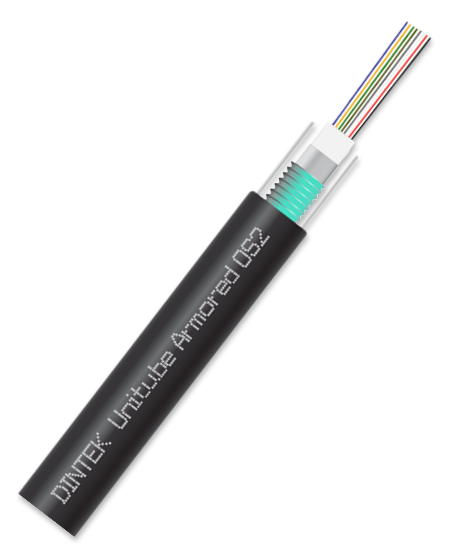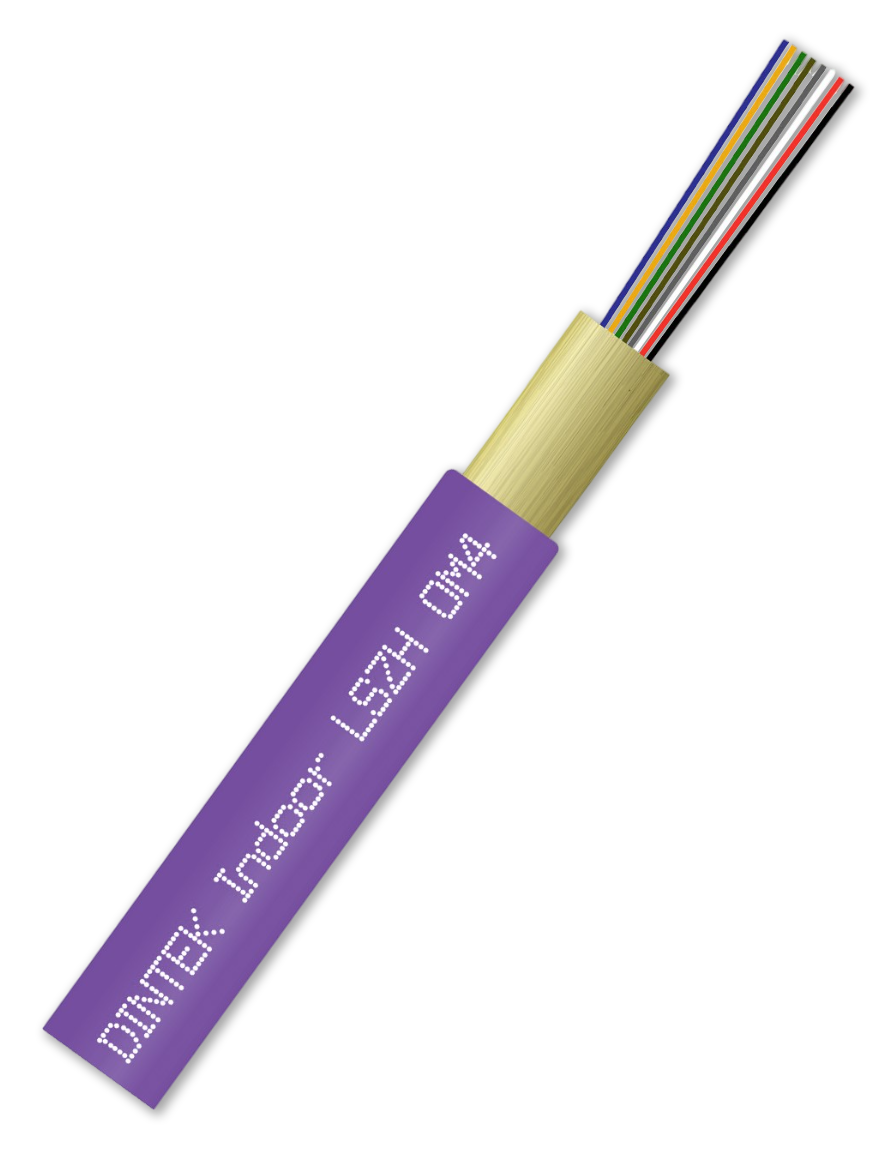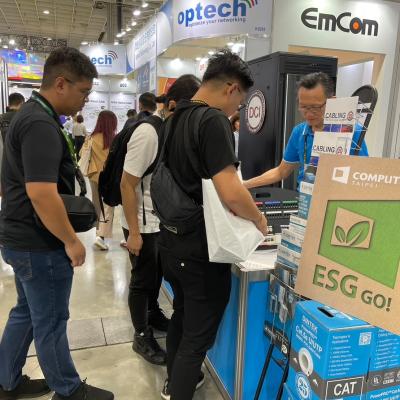When planning the infrastructure for a robust and efficient network, selecting the right type of fiber optic cable is crucial. Two primary options are available: armored and unarmored fiber optic cables. Each type offers distinct advantages and is suited to specific environments and applications. Armored cables provide extra protection against physical damage and environmental hazards, making them ideal for outdoor and industrial settings. In contrast, unarmored cables are more flexible and easier to install, often preferred for indoor use where the risk of physical damage is minimal.
This article explores the key differences between armored and unarmored fiber optic cables, helping you make an informed decision to ensure the reliability and longevity of your network infrastructure.
Armored Fiber Optic Cables
Armored fiber optic cables are designed with an additional layer of protection to withstand harsh environmental conditions and physical damage. This protective layer typically consists of steel, aluminum, or other robust materials. The armored layer surrounds the inner core, which contains the optical fibers, providing an extra barrier against crushing, rodents, and other physical threats.
The ideal applications include: outdoor installations, including direct burial in the ground or installation in conduits; industrial environments with heavy machinery and potential for physical damage; and areas with high rodent activity.
Types of Armored Cabling
The primary types include interlocked armor, corrugated steel tape (CST) armor, and aluminum armor. Interlocked armor, typically made of helically wrapped aluminum or steel, provides flexibility and mechanical protection, making it ideal for installations where the cable may be exposed to physical damage, such as in commercial buildings or industrial settings. Corrugated steel tape armor offers excellent crush resistance and is often used in direct burial applications or harsh outdoor environments. Aluminum armor, being lighter than steel, provides a balance between protection and ease of installation, commonly used in aerial and conduit installations.
Additionally, fiber optic cables often incorporate Kevlar jackets, which provide extra strength and durability. Kevlar, a high-strength synthetic fiber, is woven into the cable jacket to enhance tensile strength, making the cable more resistant to pulling forces during installation. This is particularly important for long cable runs or installations in areas with high mechanical stress. Kevlar also helps protect the delicate optical fibers from sharp bends and kinks, ensuring signal integrity and preventing breakage. Together, these armored and Kevlar-reinforced fiber optic cables ensure reliable and robust performance in various demanding environments, from underground and underwater installations to high-traffic industrial zones.

Advantages
Disadvantages
Durability: Armored cables are highly resistant to physical damage, including crushing, cuts, and impacts, making them suitable for challenging environments.
Rodent Protection: The metal armor deters rodents and other pests from chewing through the cable, reducing the risk of network interruptions.
Environmental Resistance: These cables are well-suited for outdoor and industrial settings where they may be exposed to moisture, chemicals, and other environmental hazards.
Weight and Flexibility: The added protective layer makes armored cables heavier and less flexible, which can complicate installation and require more robust support structures.
Cost: Armored cables are generally more expensive than unarmored cables due to the additional materials and manufacturing processes involved.

Unarmored Fiber Optic Cables
Unarmored fiber optic cables are designed for applications where mechanical protection is less of a concern and where a lighter, more flexible cable is desired. These cables lack the additional protective metal or Kevlar layers found in armored cables, making them more suitable for indoor environments, controlled spaces, and areas with minimal risk of physical damage. Unarmored fiber optic cables are typically used in data centers, office buildings, and residential installations where they can be routed through conduits, raceways, or other protected pathways.
The primary advantage of unarmored fiber optic cables is their flexibility and ease of installation. Without the extra weight and rigidity of armor, these cables can be easily maneuvered through tight spaces and around corners, simplifying the routing process. Additionally, unarmored cables are generally more cost-effective than their armored counterparts, making them a practical choice for budget-conscious projects.
Despite their lack of mechanical protection, unarmored fiber optic cables still offer excellent performance in terms of data transmission. They are constructed with high-quality optical fibers that provide low attenuation and high bandwidth, ensuring reliable and fast communication over long distances. Furthermore, unarmored cables can be equipped with various types of jackets, such as PVC, LSZH (low smoke zero halogen), or PE (polyethylene), to suit different environmental and safety requirements.
Advantages
Flexibility: Unarmored cables are lighter and more flexible, making them easier to handle and install, especially in tight or complex pathways.
Cost-Effective: Without the added expense of the armored layer, unarmored cables are typically less expensive, providing a cost-effective solution for many installations.
Ease of Installation: The lighter weight and increased flexibility reduce the need for specialized tools and support structures, simplifying the installation process.
Disadvantages
Vulnerability: Unarmored cables are more susceptible to physical damage, including cuts, crushing, and rodent attacks, which can lead to network failures.
Limited Use in Harsh Environments: These cables are not ideal for environments with significant physical hazards or exposure to chemicals and moisture.
Choosing between Armored and Unarmored Fiber Optic Cables
Environment and Protection Needs
Flexibility and Ease of Installation
Cost Considerations
Armored Fiber Optic Cables: Ideal for harsher environments where mechanical protection is critical. This includes industrial settings, underground installations, and outdoor areas exposed to potential physical damage, moisture, or chemical exposure.
Unarmored Fiber Optic Cables: Best suited for indoor environments, such as data centers, office buildings, and residential installations. These environments typically have controlled conditions with minimal risk of physical damage.
Armored Fiber Optic Cables: While providing excellent protection, they are heavier and less flexible due to the added layers of armor. Installation can be more challenging and may require additional tools and labor.
Unarmored Fiber Optic Cables: Lightweight and highly flexible, making them easier to maneuver through tight spaces, around corners, and through conduits. This flexibility simplifies the installation process, especially in complex indoor routing.
Unarmored Fiber Optic Cables: Generally more cost-effective, making them a practical choice for projects with budget constraints. The absence of additional protective layers reduces material and installation costs.
View the full DINTEK range of
Armored and Unarmored Fiber Optic Cables here







